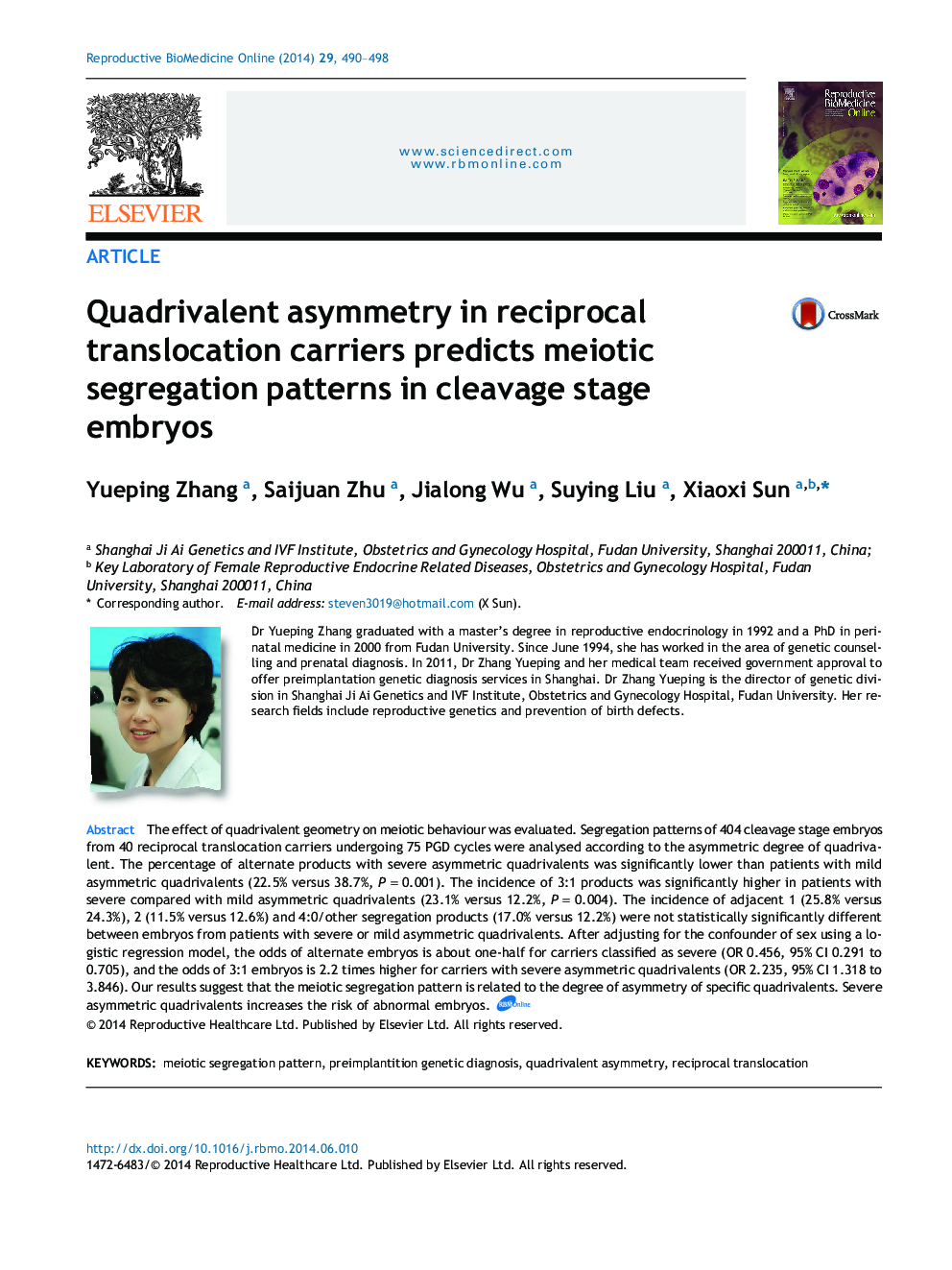| Article ID | Journal | Published Year | Pages | File Type |
|---|---|---|---|---|
| 6189104 | Reproductive BioMedicine Online | 2014 | 9 Pages |
The effect of quadrivalent geometry on meiotic behaviour was evaluated. Segregation patterns of 404 cleavage stage embryos from 40 reciprocal translocation carriers undergoing 75 PGD cycles were analysed according to the asymmetric degree of quadrivalent. The percentage of alternate products with severe asymmetric quadrivalents was significantly lower than patients with mild asymmetric quadrivalents (22.5% versus 38.7%, P = 0.001). The incidence of 3:1 products was significantly higher in patients with severe compared with mild asymmetric quadrivalents (23.1% versus 12.2%, P = 0.004). The incidence of adjacent 1 (25.8% versus 24.3%), 2 (11.5% versus 12.6%) and 4:0/other segregation products (17.0% versus 12.2%) were not statistically significantly different between embryos from patients with severe or mild asymmetric quadrivalents. After adjusting for the confounder of sex using a logistic regression model, the odds of alternate embryos is about one-half for carriers classified as severe (OR 0.456, 95% CI 0.291 to 0.705), and the odds of 3:1 embryos is 2.2 times higher for carriers with severe asymmetric quadrivalents (OR 2.235, 95% CI 1.318 to 3.846). Our results suggest that the meiotic segregation pattern is related to the degree of asymmetry of specific quadrivalents. Severe asymmetric quadrivalents increases the risk of abnormal embryos.
